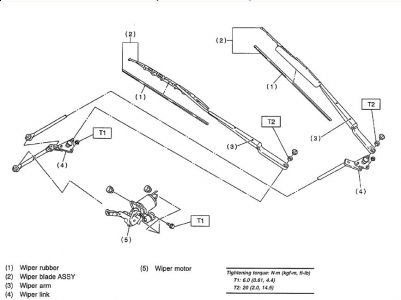Actually, I couldn't find anything else that made sense and the motor wasn't too expensive, so I replaced it just hoping it would solve the problem.
I have removed the wiper arms. It was VERY difficult the first time, which makes me think they would not have moved easily on the shafts. I don't see a lot of corrosion on the ribs, and I'm sure the nuts are tight. I can't get them to slip on the shafts using manual force against the motor - at least not without applying more force than I am comfortable with, so I'm confident they aren't just flopping on the shafts.
If I stop the wipers at the top of the stroke, I can move the wipers manually all the way to the park position, but I can only move them a few inches back up before I get solid resistance - probably 6 inches at the tip of the wiper - about to the point that I would expect to be the bottom of the normal stroke. I don't find more than 1 inch of play in the wipers on my other vehicle (1999 Chev Suburban), but I don't know if this is normal for the Subaru.
This started after snow was allowed to pack up under the wipers during a snowstorm, and I could see that the amount of play could just about correspond to the amount of snow that was packed up, I just can't isolate the movement in the system.
The variation in the stroke distance is literally several inches - 3 or 4 inches at least - from what I would expect to be the normal and the greatest travel that I am seeing, and I see travel anywhere in that range.
If I were confident that the problem is with that 6 inches of play, I would just replace the transmission, but I really don't understand whether there is some other control on the amount of travel. As it stands, I see a normal stroke some of the time, but most of the time it seems to stop when it hits the windshield frame and the cowl cover at each end of the stroke, and it hits hard enough to bounce when it hits the cowl cover.
Please let me know if you have any further thoughts, but it seems to me the play has to be in the transmission.
Thanks
Thursday, December 10th, 2009 AT 10:12 AM

